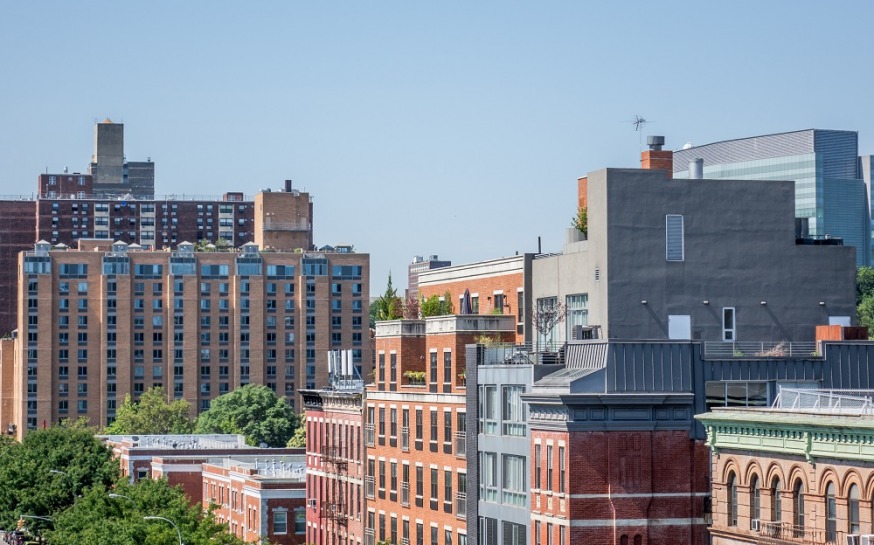
Photo: NYC Housing Preservation & Development
April 5, 2021 Op-Ed By Denise Keehan-Smith
I’m a third-generation Woodside resident and my family has lived in Woodside for over 85 years. The Woodside, Sunnyside, and Long Island City community is our home, and like many families, it’s getting more and more expensive for people to stay here.
The reason is simple: affordable housing is not really affordable.
During my time as Chairwoman of Community Board 2, there was a great deal of residential buildings constructed in Woodside, Sunnyside, and Long Island City.
Most developers promised that they would offer a portion of the available units at an affordable rent. Potential residents were excited about the prospects of living in a new building with a chance to pay a fair amount. Most were disappointed when they learned they didn’t qualify for one of the affordability ‘bands’ due to their income or, the rent was much higher than what they expected to pay.
So why is it then that affordable housing is not really affordable?
Housing is considered affordable when it consumes no more than 30 percent of a person’s total income. To create affordable housing, the regional Area Median Income (AMI) is used to determine affordability.
The AMI for New York City is calculated every year by the U.S. Department of Housing and Urban Development (HUD). It includes all five boroughs as well as outlying counties Nassau, Suffolk, Westchester, Fairfield and Putnam. The current AMI for 2020 is $102,400 for a family of three.

Photo: Denise Keehan-Smith (Courtesy of Keehan-Smith)
AMI sets the rent of a subsidized unit and allows households to use their income level and household size to determine what is affordable for them. Furthermore, there are five affordability categories for New Yorkers. They range from zero to 165 percent AMI. The Extremely Low Income ranges from zero to 30 percent AMI, The Very Low Income is 31-50 percent AMI, Low Income is 51-80 percent AMI, Moderate Income is 81-120 percent AMI, and Middle Income is 121-165 percent AMI.
While a small percentage of the available units are offered at the lowest AMI bands, most units are offered at the higher AMI rates, allowing developers to recoup their costs in building, but it does not provide a fair opportunity to the neediest of people.
In a large percentage of cases, it appears those who can afford to pay the higher rates usually decline the apartments because they do not believe they are getting the most for their money. The situation came to a head last year in February 2020 when the mayor learned there were over 300 newly constructed apartment units that were slotted for the higher AMI bands, but remained unoccupied. Instead, he moved homeless individuals into the available units.
Another common issue is developers providing a percentage of newly constructed affordable housing units to those living in the immediate area. It excludes those who want to move into a new area, but it also excludes those who do not earn enough to qualify for the available affordability bands.
It’s time to do better for our communities and create real affordable housing.
The inclusion of income from outlying counties to calculate our AMI is outdated and ineffective. Look no further than the fact that New York’s AMI is 20 percent higher than the median income in New York City. We should also consider using a different criteria such as zip codes to determine realistic neighborhood averages. Replacing or recalculating AMI is the best way to deliver more affordable housing units for the people who actually need it the most.
We must work together to find a solution to housing affordability to keep our diverse communities thriving.
Denise Keehan-Smith is a lifelong Woodside resident, the former chairwoman of Community Board 2, and the current Democratic District Leader for the 30th Assembly District Part A. She is a Democratic candidate for the 26th Council District.
4 Comments

Here is a solution to lowering the cost of affordable housing: keep on raising taxes for everyone.
Higher taxes –> wealthy people move out, take jobs with them –> middle class now have to pay taxes for themselves and for the wealthy who moved out to maintain the level of government spending –> middle class moves out –> just the poorest remain –> housing units, previously occupied by the wealthy and middle class, become empty –> housing unit prices go down.
This is why i will be voting progressive this upcoming election!
Please provide evidence of any point in history any point where taxes created a mass exodus of citizens.
While we’re at it we should decriminalize everything.
Bam! No more crime.
You’ve got my vote!